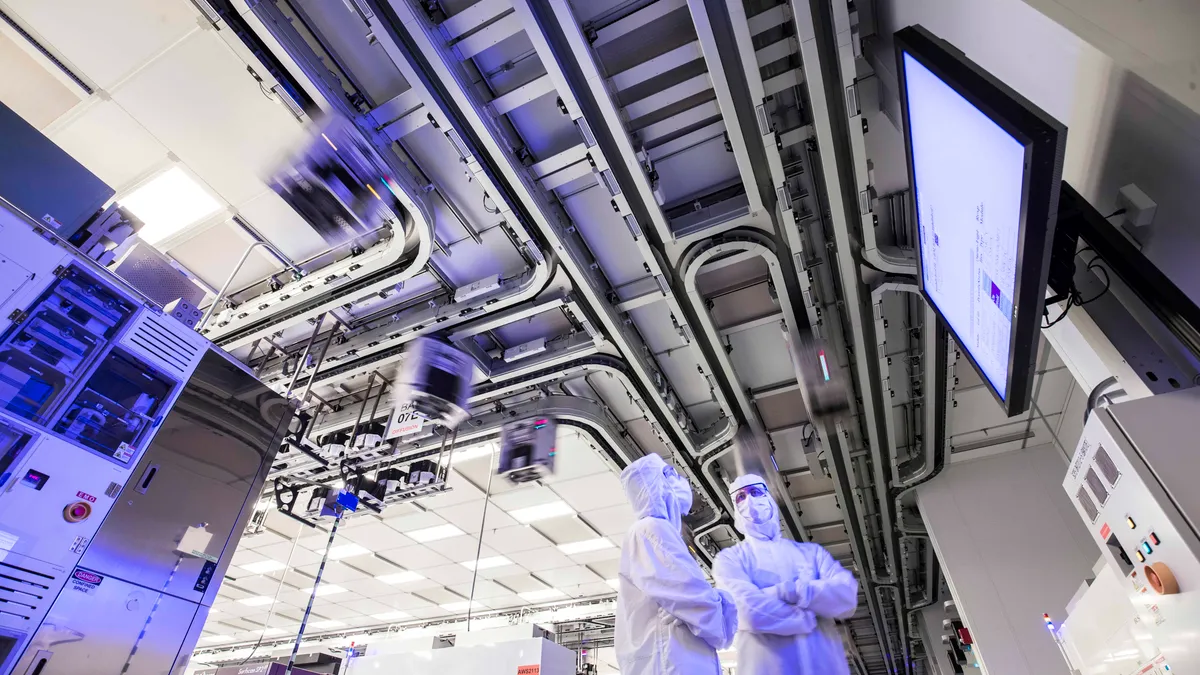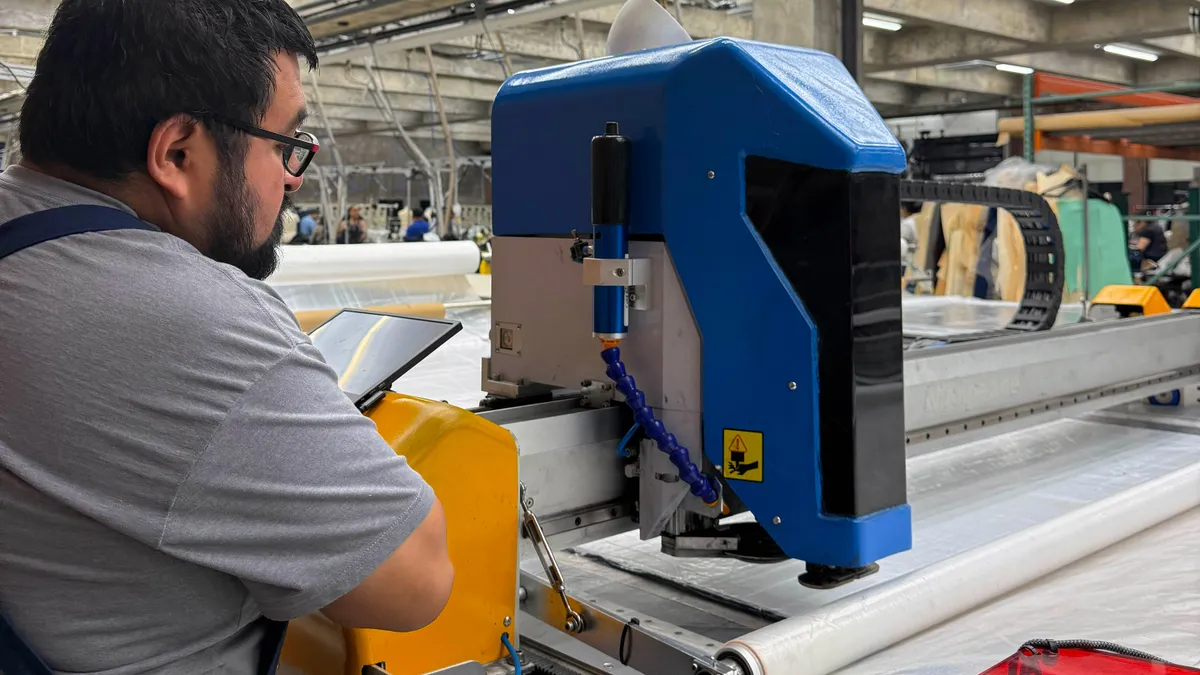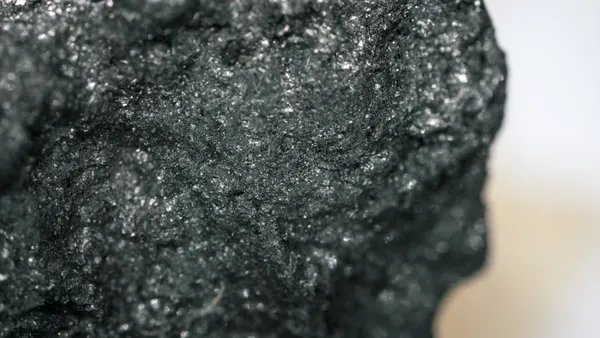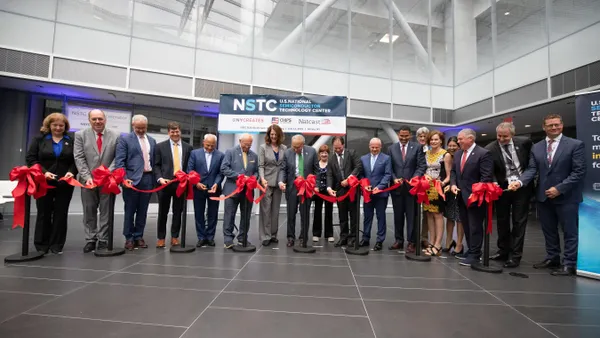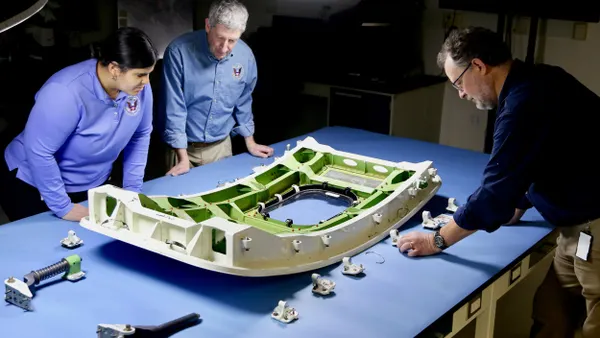Dive Brief:
- The European Commission announced Feb. 2 it reached an agreement on the Net-Zero Industry Act, a bill aiming to boost domestic clean energy technology manufacturing to support the European Union’s climate goals.
- The bill is a key part of the bloc’s Green Deal Industrial Plan and establishes a goal for the EU’s manufacturing capacity to supply at least 40% of the jurisdiction’s demand for net-zero technologies by 2030.
- The NZIA will look to attract clean energy investments to the bloc by simplifying and expediting permitting for projects to create solar panels, wind power, electrolysers, batteries and more. The package follows a trio of bills passed in the U.S. in 2021 and 2022 aimed at onshoring critical technologies for the climate transition.
Dive Insight:
EU President Ursula von der Leyen announced the intention to create the NZIA in February 2023, a few months after the U.S. passed its third bill aimed at incentivizing and increasing domestic production of clean energy technologies. The Inflation Reduction Act and its $369 billion in climate and tech tax incentives were signed into law in August 2022, following the CHIPS and Science Act that same month and the Infrastructure Investment and Jobs Act in 2021.
The NZIA will target investments in solar panels, onshore and offshore wind, fuel cells, electrolysers, batteries, grid technologies and sustainable alternative fuels, along with other technologies. The Commission previously reached an agreement on a critical minerals deal in November to help onshore and secure the supply chain for those technologies as well.
“The political agreement on the Net-Zero Industry Act is a significant stride towards realising our ambitious climate and economic objectives,” von der Leyen said in a release. “It demonstrates our collective commitment to build a more sustainable, resilient and competitive industrial sector in Europe.”
For technologies that fall within the bloc’s Net-Zero Strategic Projects, the EU will look to remove even more regulatory red tape. The legislation creates Net-Zero Acceleration Valleys that member states can set up, cluster clean energy projects and quicken the permitting process by having the environmental assessments applicable to multiple projects.
The concept is similar to the Infrastructure Investment and Jobs Act’s inclusion of hydrogen hubs, a program which received $7 billion in funding to establish six to 10 clean hydrogen hubs around America.
The NZIA will also look to increase carbon capture in the bloc, facilitate market access for clean energy products and develop academies to upskill the EU’s workforce for the transition.
While bills like the Inflation Reduction Act, IIJA and the CHIPS and Science Act took the approach of including direct funding, loan programs or tax incentives to increase domestic production of clean energy technologies, the NZIA looks to accomplish the same goal by creating a permissive regulatory environment for investments.
The NZIA includes no new funding, but the proposal said the EU will direct investments to the most necessary green technology sectors by “establishing definitions of economic activities that can be considered environmentally sustainable.”
The agreement is now subject to approval from the European Parliament and European Council before it takes effect.
The accompanying Critical Raw Material Act is most analogous to the CHIPS and Science Act, which included $52 billion in subsidies to boost U.S. production of the semiconductors necessary for things like electric vehicles. The Inflation Reduction Act also incentivizes onshoring or nearshoring supply chains and critical minerals by rolling out stringent supply chain sourcing requirements for tax credit qualifications like the electric vehicle credit.
The CRMA creates a “critical raw materials club” and will use trade agreements and strategic partnerships to diversify its raw mineral value chain.






